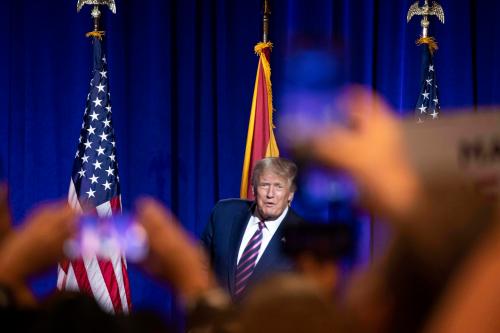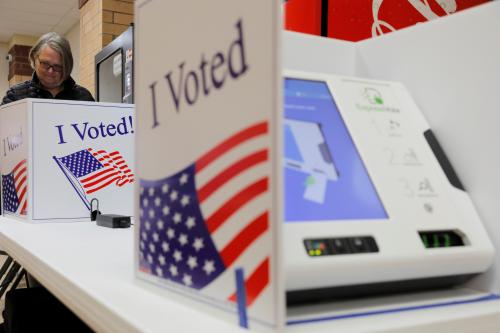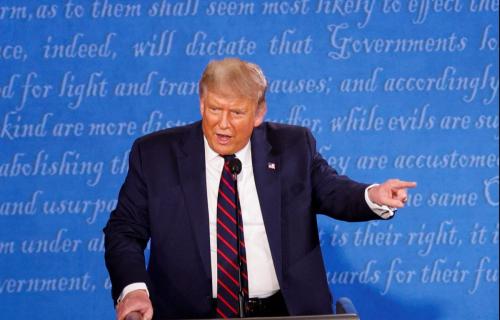In the week following the first presidential debate, Joe Biden broke out to a 10-point lead against Donald Trump among registered voters. There’s no mystery about why this happened: the American people responded very negatively to the president’s conduct during the debate, which they regarded as unpresidential. Biden’s lead on presidential attributes such as honesty rose, as did the public’s evaluation of his ability to perform key presidential tasks. Even the president’s once-formidable advantage as manager of the economy took a hit.
But there’s another question the answer to which is less obvious: why is Joe Biden doing so much better against Donald Trump than Hillary Clinton did? Clinton beat Trump by 2 points—48 to 46—in the national popular vote, while Biden now leads Trump 52 to 42. Which groups in the electorate account for Biden’s 4-point gain over Clinton’s share of the vote and Trump’s 4-point decline since 2016? Thanks to a just-released Pew Research Center survey with a sample of more than ten thousand registered voters, we can now begin to see the key shifts.
Ever since the massive women’s march on Washington the day after Trump’s inauguration, Trump has had a problem with women voters. The large gender gap has persisted throughout the midterm elections and into the special elections held during Trump’s first term. It has become conventional wisdom in 2020 that a Biden victory would be powered by women’s massive disaffection from Donald Trump. But the Pew findings show that something else is happening that calls this assumption into question, something that may shed light on the larger problem of sexism in the 21st century.
Joe Biden is doing about as well as Hillary Clinton did among women; the big shift is with men.
Forty-nine percent of men are supporting Joe Biden, compared to the 41% Hillary Clinton received. As in 2016, Black women are nearly unanimous in their support for the Democratic nominee, but Biden is doing 6 points better than Clinton among Black men. Among white men, Biden is doing 10 points better than Clinton did, compared to a modest 3-point gain among white women.
Turning our attention to the white working class, we see a similar pattern. Contrary to previous analyses (including my own), the Pew study shows Biden doing no better than Clinton among white working-class women (34% for Clinton, 35% for Biden). But Biden is running 10 points ahead of Clinton among white working-class men.
As many analysts have suggested, President Trump’s support is eroding among college-educated whites. Here the pattern is somewhat different: Biden is scoring big gains with both men and women. Even so, the gains are larger among men. Thirty-nine percent of white college-educated men voted for Clinton. Now, 53% support Biden, a 14-point gain since 2016. Biden enjoys the support of 62% of white college-educated women, an 11-point improvement over Clinton’s 51%.
If the 2020 election results confirm these survey findings, we will have to rethink the role of gender in recent elections. One hypothesis has been that Trump’s often crude and sexist behavior turned women off from Trump early on. And there’s no doubt that that has been part of the answer to this puzzle. But when we look back at these two races, the key point may not be women’s disaffection from Trump in 2020, but rather men’s antipathy to Hillary Clinton in 2016.
Women in politics and journalism report high levels of threats against them; many containing violent sexual references. Just this week law authorities in Michigan arrested 13 people in a plot to kidnap Gretchen Whitmer, the Democratic Governor of Michigan and one of only 9 female Governors.
In focusing on the dynamics of race and class in the emergence of populism, have we underestimated the continuing power of sexism directed against women who refuse to conform to the gender script?







Commentary
Gender in the 2020 election: Have we gotten the story backwards?
October 9, 2020